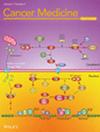Trends of Female Breast Cancer Incidence, Mortality, and Survival in Fujian Province of China: 2011–2020 and Projection to 2025
Abstract
Background
Breast cancer was the second most common cancer and the fifth leading cause of cancer deaths among women in China, with increasing trends. Evaluating breast cancer trends and predicting future burdens can inform prevention strategies. This study aimed to analyze the trends in female breast cancer incidence, mortality, and survival in Fujian Province, southeastern China, between 2011 and 2020, and to project the future burden through 2025.
Methods
Population-based cancer registry data from Fujian Province were collected during 2011–2020, with survival follow-up extending through March 2022, covering approximately 2.59 million women. Age-standardized incidence rates (ASIR) and mortality rates (ASMR) were calculated using Segi's world standard population. Temporal trends were assessed using Joinpoint regression analysis to determine average annual percentage change (AAPC). Relative survival were computed as the ratio of observed survival to expected survival. Autoregressive Integrated Moving Average (ARIMA) model was employed to predict incidence and mortality for 2021–2025.
Results
During 2011–2020, 8047 female breast cancer cases and 1754 deaths were recorded. The ASIR increased from 19.34/100,000 to 38.73/100,000, with an AAPC of 7.4% (95% CI: 3.6%–11.4%). The ASMR increased from 3.37/100,000 to 6.19/100,000, with an AAPC of 8.3% (95% CI: 4.3%–12.4%). Rural areas showed more rapid increases in both incidence and mortality than in urban areas. In 2011–2014, 2015–2017, and 2018–2020, the age-standardized 5-year relative survival rates were 64.10% (95% CI: 59.85–68.02), 69.35% (95% CI: 64.62–73.57), and 72.94% (95% CI: 68.5–76.86), with higher survival in urban areas and younger age groups. The ARIMA models projected continued increases in both ASIR and ASMR through 2025, reaching 46.41/100,000 and 8.46/100,000, respectively.
Conclusion
Breast cancer constitutes an escalating public health challenge in Fujian Province with disparities across age groups and urban and rural areas. Future strategies should prioritize healthcare equity and regional resource allocation to reduce mortality and enhance survival outcomes.


 求助内容:
求助内容: 应助结果提醒方式:
应助结果提醒方式:


